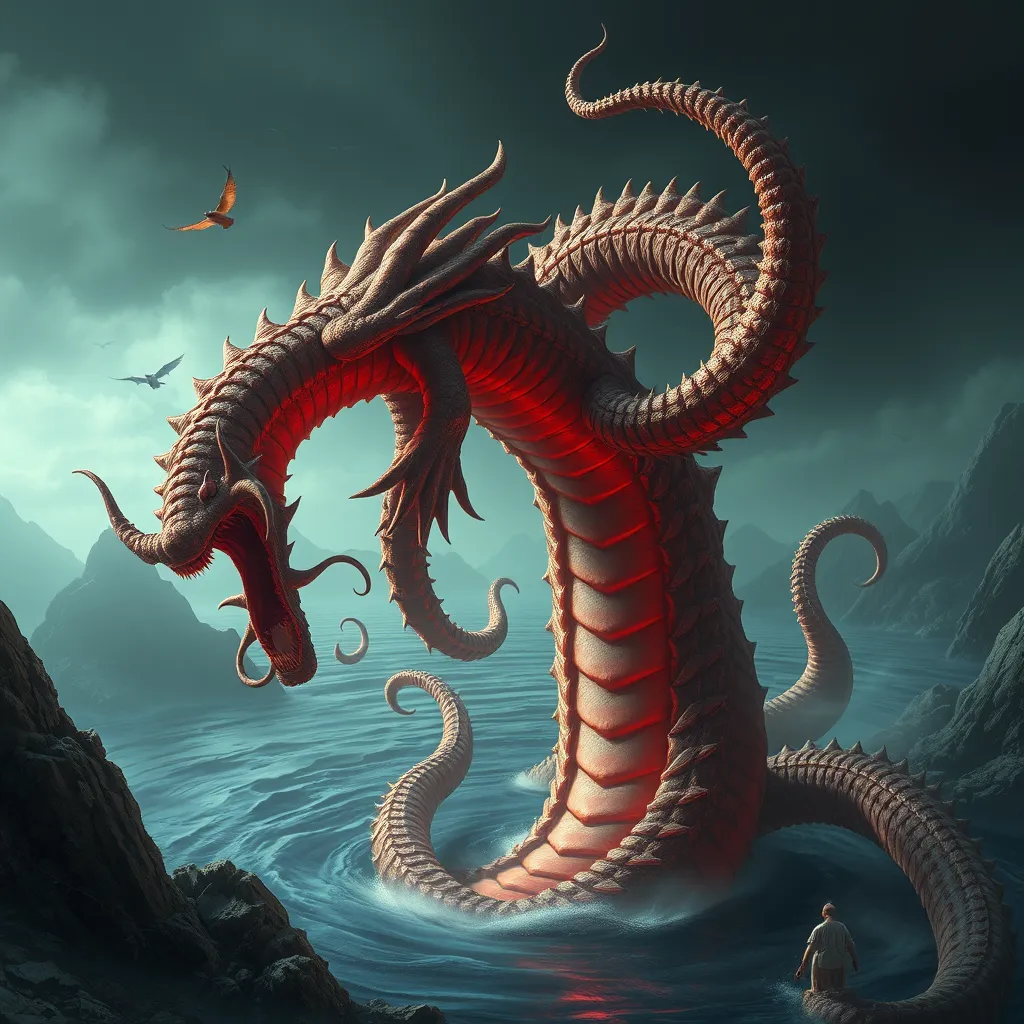The Selkie in Japanese Folklore: Exploring the Kaibyo’s Role in Mythology and Art
I. Introduction
A Selkie is a mythical creature found predominantly in Celtic folklore, known for its ability to transform from a seal into a human. The legends often revolve around themes of love, loss, and the longing for one’s true home. In contrast, the Kaibyo, or “cat yokai,” is a unique figure in Japanese mythology, representing the spiritual essence of cats and their dual nature as both companions and mystical beings.
This article aims to explore the connections between the Selkie and the Kaibyo, examining how these two mythical entities reflect the cultures from which they originate and their significance in folklore and art.
II. The Concept of Selkies in Global Folklore
A. Origins and characteristics of Selkie legends in Celtic mythology
Selkie legends are rooted in the coastal regions of Scotland and Ireland, where the sea plays a crucial role in the lives of the inhabitants. Selkies are described as seals that can shed their skins to become beautiful humans. The transformation is often accompanied by a poignant narrative, where a Selkie may fall in love with a human but is ultimately bound to return to the sea.
B. Common themes and narratives surrounding Selkies
- The duality of nature: Selkies represent the conflict between human desire and the call of the wild.
- Love and loss: Many stories depict the tragic consequences of love between humans and Selkies.
- Longing for home: The Selkie’s return to the sea symbolizes a yearning for one’s true identity.
C. Impact of Selkie stories on contemporary culture
Selkie stories have influenced modern literature, film, and art, inspiring works that explore themes of transformation and belonging. Their enduring appeal speaks to universal human experiences of love, loss, and identity.
III. Understanding Kaibyo: The Cat Yokai
A. Definition and characteristics of Kaibyo in Japanese folklore
Kaibyo, or “cat spirits,” are a type of yokai in Japanese folklore. These supernatural beings are often depicted as cats with magical powers, capable of transformation and possessing various abilities, such as granting luck or mischief. They are characterized by their distinct personalities, which range from benevolent to vengeful.
B. Historical background of Kaibyo and its evolution
The concept of Kaibyo has evolved over centuries, influenced by cultural attitudes towards cats in Japan. Initially revered for their role in controlling pests and protecting rice stores, cats later became associated with superstition and the supernatural.
C. The significance of cats in Japanese culture
Cats hold a special place in Japanese culture, often symbolizing good fortune and protection. The famous “Maneki-neko” or “beckoning cat,” is a common talisman believed to bring prosperity. The dual nature of cats as both domestic companions and mystical beings is embodied in the Kaibyo legends.
IV. Comparative Analysis: Selkies and Kaibyo
A. Similarities in transformation narratives
Both Selkies and Kaibyo share narratives of transformation, where the boundaries between human and animal blur. This transformation often signifies deeper themes of identity and belonging.
B. Themes of duality and belonging in both mythologies
- Both entities navigate between two worlds: the human realm and the natural world.
- They embody the struggle between personal desire and societal expectations.
C. The role of water as a transformative element in both stories
In Selkie legends, the sea is a crucial element that represents both freedom and confinement. In the case of Kaibyo, water can serve as a portal to the supernatural, highlighting the spiritual significance of aquatic spaces in Japanese folklore.
V. The Kaibyo in Japanese Art and Literature
A. Depictions of Kaibyo in traditional and modern art
Kaibyo have been depicted in various forms of art, from classic ukiyo-e woodblock prints to contemporary illustrations. Artists often focus on their magical attributes and whimsical nature, showcasing cats in fantastical settings.
B. Influence of Kaibyo on Japanese literature and poetry
Kaibyo appear in numerous literary works, symbolizing themes of mystery and duality. They are often featured in folklore collections and modern stories that explore the relationship between humans and cats.
C. Analysis of famous artworks featuring Kaibyo
Notable artworks include works by artists such as Utagawa Kuniyoshi, whose prints often depict mythical cats in dynamic poses, emphasizing their supernatural qualities. These representations capture the essence of Kaibyo and their place in the cultural imagination.
VI. The Influence of Selkie Mythology on Japanese Culture
A. Cross-cultural exchanges and adaptations of Selkie tales in Japan
With globalization, Selkie stories have found their way into Japanese culture, leading to adaptations that blend elements of both mythologies. This fusion highlights the interconnectedness of global folklore.
B. The emergence of hybrid stories combining Selkie and Kaibyo elements
Contemporary authors and artists are creating hybrid narratives that incorporate both Selkie and Kaibyo, exploring themes of transformation, identity, and the human-animal connection.
C. Contemporary representations in media and popular culture
Films, anime, and literature are increasingly drawing from both Selkie and Kaibyo myths, reflecting a growing interest in these rich narratives. Their influence can be seen in character designs, plotlines, and thematic elements.
VII. The Role of Women in Selkie and Kaibyo Myths
A. Exploration of femininity and identity in both narratives
Both Selkie and Kaibyo myths often feature strong female characters who navigate complex identities and societal roles. The Selkie’s dual nature as both a human and a seal reflects the fluidity of feminine identity.
B. The depiction of agency and victimhood in the Selkie and Kaibyo stories
- Selkies are often portrayed as victims of human desire, yet they also exhibit agency in their choices.
- Kaibyo can embody both nurturing and vengeful aspects, reflecting the complexities of female power.
C. Feminist interpretations and modern retellings
Recent interpretations of these myths highlight feminist themes, emphasizing women’s agency and the reclamation of their narratives. Modern retellings often empower female characters, allowing them to break free from traditional constraints.
VIII. Conclusion
In summary, the Selkie and Kaibyo represent fascinating dimensions of folklore and mythology, revealing insights into cultural identities and human experiences. The exploration of their narratives highlights universal themes of transformation, belonging, and the interplay between human and animal realms.
The enduring legacy of both Selkie and Kaibyo in art and literature showcases their significance in understanding the complexities of femininity, identity, and cultural exchange. As we continue to share and adapt these myths, they remind us of the rich tapestry of human storytelling that transcends borders and connects us all.



